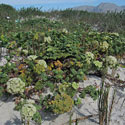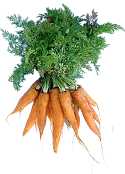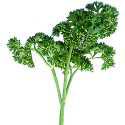|
Family: Apiaceae / Umbelliferae (carrot family)
Life
> eukaryotes >
Archaeoplastida >
Chloroplastida
>
Charophyta > Streptophytina > Plantae (land plants)
> Tracheophyta (vascular plants) > Euphyllophyta > Lignophyta (woody plants)
> Spermatophyta (seed plants) > Angiospermae (flowering
plants)
> Eudicotyledons > Core Eudicots > Asterids > Euasterid II >
Order: Apiales
There are about 453 genera and more than 3750 species
(cosmopolitan but mainly temperate regions), of which 40 genera and 164 species
are native to southern Africa and a further nine genera and 13 species have
been introduced to this region and become naturalised. A further
18 genera and 29 species are under cultivation. This family contains many important
medicinal and culinary herbs and there are also some species eaten as
vegetables.
Genera native to southern Africa
Information mainly from van Wyk (2000).
|
Afrocarum
Only one
species, Afrocarum imbricatum, occurring in south-central Africa,
including Zimbabwe and Mozambique. |
|
|
Afroligusticum
Four species native to southern Africa. |
|
|
Afrosciadium
Six species native to southern Africa.
|
|
|
Agrocharis
There are a total of four species, native to Africa, of which three are
native to southern Africa. |
|
|
Alepidea
About 28
species, with 25 species occurring in southern Africa, although a few
extend as far north as Ethiopia. |
|
|
Anginon
Twelve species in total, all of which are native to southern Africa. |
|
|
Annesorhiza
The 14 species
are all native to southern Africa. |
|
|
Apium
The genus has a
cosmopolitan distribution and of the 25 species, two species occur in southern
Africa of which one, Apium prostratum (Sea Celery), is indigenous. Celery Apium
graveolens is naturalised in the region. |
 |
|
Arctopus
The three species are
endemic to the Northern, Western and Eastern Cape. |
|
|
Berula
Three species native to southern Africa. |
|
|
Bupleurum
About 180
species, native mainly to Europe, Asia and Africa with one species, Bupleurum
mundii, indigenous to southern Africa. In addition, Bupleurum
rotundifolium has been introduced to southern Africa as a garden plant
and occurs as an escape in northern regions. |
|
|
Capnophyllum
The four species
are found in coastal sands of the Northern and Western Cape. |
|
|
Chamarea
At least five
species, all endemic to southern Africa. |
|
|
Choritaenia
Only one
species, Choritaenia capensis, endemic to southern Africa. |
|
|
Conium
The six species are
native to Europe, Africa and Asia with three native to southern Africa. In
addition, the highly poisonous cosmopolitan weed, Conium maculatum (Hemlock),
has become established in the Western Cape. |
|
|
Cynorhiza
[= Peucedanum]
Three species native to southern Africa. |
|
|
Dasispermum
Seven species, found commonly along
the South African coastline. |
 |
|
Deverra
The seven species are native to Africa and the Arabian Peninsula, with two species in
southern Africa. |
|
|
Diplolophium
The five species
are native to tropical Africa with two, Diplolophium buchananii
(see
Flora of Zimbabwe) and Diplolophium zambesianum
(see
Flora of Zimbabwe), occurring in southern Africa. |
|
|
Dracosciadium
The two species are found in high altitude areas of KwaZulu-Natal. |
|
|
Ezosciadium
The only
species is Ezosciadium capense, native to the Eastern Cape. |
|
|
Glia
The three species are native to Africa, all occurring in southern Africa. |
|
|
Hermas
All eight species are endemic to the Western and Eastern Cape. |
|
|
Heteromorpha
The seven species
are native to sub-Saharan Africa and Yemen and five of them are found in
southern Africa. |
|
|
Itasina
The only species
is Itasina filifolia, endemic to the Western and Eastern Cape. |
|
|
Lefebvrea
One species native to southern Africa - Lefebvrea grantii [= Peucedanum angolense],
recorded from Zimbabwe and Mozambique. |
|
|
Lichtensteinia
There are
seven species, all occurring in southern Africa. |
|
|
Marlothiella
The only
species is Marlothiella gummifera, native to the Namibian
coastline. |
|
|
Nanobubon
Two species are native to southern Africa. |
|
|
Notububon
Eleven species are native to southern Africa. |
|
|
Peucedanum
One species native to southern Africa - Peucedanum triternatum.
Previously considered to be a much larger genus, most of its species have
been moved into the following genera - Afroligistum, Afrosciadium,
Annesorhiza, Glia, Lefebvrea, Notobubon, Nanobubon
and Stenagotaenia. |
|
|
Phlyctidocarpa
The only
species is Phlyctidocarpa flava, native to northwestern Namibia. |
|
|
Pimpinella
(Anise genus)
About 150
species, found worldwide with nine species native to southern Africa.
Pimpinella anisum (Anise) is a medicinal and culinary herb native from Greece through to Egypt, and is cultivated in southern Africa. |
|
|
Polemannia
The three species
are native to southern Africa. |
|
|
Polemanniopsis
Two
species native to southern Africa - Polemanniopsis marlothii
and Polemanniopsis namibensis. |
|
|
Sanicula
About 39 species,
found virtually worldwide with one species, Sanicula elata, native
to southern Africa. See
Flora of Zimbabwe. |
|
|
Scaraboides
One species native to southern Africa - Scaraboides manningii. |
|
|
Sium
(Water parsnip genus)
A cosmopolitan genus with 14 species. One species is
native to southern Africa and another two species are cultivated. |
|
|
Steganotaenia
The two
species are native to Africa, with one, Steganotaenia
araliacea, occurring in southern Africa. See
Flora of Zimbabwe. |
|
|
Stenosemis
The two species
are endemic to southern KwaZulu-Natal and the Eastern Cape. |
|
Genera naturalised in southern Africa
Information mainly from van Wyk (2000).
|
Ammi (Lace
plant genus)
The 3-4 species are
native to Europe, Asia and north Africa. One species, the Lace-plant Ammi
majus, has been introduced to southern Africa as garden plant and
become naturalised. It is native from S Europe through to SW Asia.
Ammi visnaga (Visnaga) is native to the Mediterranean region and is
cultivated in southern Africa. Its use as a medicinal plant for treating
angina and asthma dates back to at least Assyrian times. |
|
|
Anthriscus
(Chervil genus)
Total of 10-12
species, native to Europe, Asia and Africa. Anthriscus sylvestris
is naturalised in southern Africa. Anthriscus cereifolium (Chervil)
is native from Europe through to W Asia and is cultivated in southern
Africa. |
|
|
Coriandrum
(Coriander genus)
The two species
are native to Europe and Asia. One of them,
Coriandrum sativum (Coriander,
Cilantro),
is native from S Europe through to SW Asia and has been introduced to southern Africa as a garden herb.
It also occurs in the
wild as an escape. |
|
|
Cyclospermum
The
only species is Cyclospermum leptophyllum which originates from the
Caribbean and central America and is a weed worldwide, including in
southern Africa. |
|
|
Daucus
Species total 22
and are native to Europe, Asia, North Africa and Australia. The Carrot Daucus
carota is not only cultivated in southern Africa but also occurs as an
escape and roadside weed. |
 |
|
Foeniculum
(Fennel genus)
Species total 5 and are native to Europe, Asia, and North Africa. Fennel Foeniculum
vulgare, a medicinal and cullinary herb, is not only cultivated in southern Africa but occurs as a
roadside weed. See
Flora of Zimbabwe. |
|
|
Pastinaca
(Parsnip genus)
The taproot of Pastinaca
sativa
(Parsnip) is eaten as a vegetable. The Parsnip originates from Europe and W
Asia and is cultivated in southern Africa, where it has also become
naturalised. |
|
|
Petroselinum
(Parsely genus)
Petroselinum crispum (Parsely),
which originates from Europe, is cultivated in southern Africa as a culinary
herb, and has also become naturalised in the region. |
 |
|
Torilis
About 15 species,
native to Africa and adjacent areas. Two species are naturalised in
southern Africa. |
|
Other genera, cultivated in southern
Africa
Information mainly from Glen (2002).
|
Anethum (Dill
genus)
Anethum graveolens (Dill) is a
culinary herb native to Europe and SW Asia and cultivated in southern
Africa. |
|
|
Angelica
(Angelica genus)
Angelica archangelica (Garden
angelica) is native to north temperate regions and is cultivated in
southern Africa. Leaves are eaten as a vegetable and the petioles and
inflorescence stems are candied (usually coloured green) for cake
decoration. Angelica sylvestris (Wild angelica) is also cultivated in
southern Africa. |
|
|
Astrantia
Astrantia maxima (Masterwort) is native from S
Europe through to the Caucasus and is cultivated in southern Africa. |
|
|
Bolax
Bolax
gummifera is native to southern South America and the Falkland
Islands and is cultivated in southern Africa. |
|
|
Carum
(Caraway genus)
Carum carvi (Caraway)
is cultivated in southern Africa. It is native to Europe and is grown
for its seed-like fruit, which are used to flavour bread, sauerkraut,
cheese, seedcake and liqueur (Kümmel). |
|
|
Ciclospermum
Ciclospermum leptophyllum is native from
Mexico through to Argentina and is cultivated in southern Africa. |
|
|
Crithmum (Sea
samphire)
The single species Crithmum
maritinum (Sea samphire) is native to the Atlantic coast of Europe
and is cultivated in southern Africa. |
|
|
Cryptotaenia
Cryptotaenia japonica (Mitsuba) is native to
Korea, China and Japan, and is cultivated in southern Africa. |
|
|
Cuminum
(Cumin genus)
Cuminum cyminum (Cumin)
is a culinary herb native to the Mediterranean that is cultivated
in southern Africa. |
|
|
Eryngium
Six species, with indigenous ranges in Europe and South
America, are cultivated in southern Africa. |
|
|
Heracleum
Heracleum mantegazzianum (Giant hogweed) is
native to SW Asia and is cultivated in southern Africa. |
|
|
Levisticum (Lovage)
The single species in this genus Levisticum officinale
(Lovage) is native to the E Mediterranean and is cultivated in
southern Africa. The leaves are used like celery and the fruit and roots are
used in flavouring liqueurs. |
|
|
Ligusticum
Ligusticum scoticum (Scots lovage) is
native to NE USA and Europe and is cultivated in southern Africa. |
|
|
Myrrhis
(Sweet cicely)
The single species Myrrhis
odorata (Sweet cicely) is native to Europe and is cultivated in
southern Africa as a culinary and medicinal herb. |
|
|
Oreoxis
Oreoxis alpina is native to W USA and is
cultivated in southern Africa. |
|
|
Ptychotis
One unidentified species cultivated in southern Africa. |
|
|
Smyrnium
Smyrnium olusatrum (Alexanders) is native from Europe through to SW Asia and is cultivated in southern Africa. |
|
|
Trachymene
Trachymene coerulea (Blue lace flower) is
native to W Australia and is cultivated in gardens in southern Africa. |
|
Other genera of note
Ferula (Asafoetida
genus) A smelly gum-resin termed asafoetida is obtained from the root latex of
Ferula assa-foetida
(native to W Iran) and some other members of the genus and is used
medicinally. The resin is collected by making cuts at the base of the stem or at the
top of the root. |
|
Publications
-
Burtt, B.L. 1991. Umbelliferae of southern
Africa: an introduction and annotated checklist. Edinburgh Journal of
Botany 48: 133-282.
-
Cannon, J.F.M. 1978. Umbelliferae. Flora
zambesiaca 4: 555-621.
-
Glen, H.F. 2002. Cultivated plants of
southern Africa. Jacana, Johannesburg.
-
Mabberley, D.J. 1987. The Plant Book.
Cambridge University Press, Cambridge.
-
Pimenov, M.G. & Leonov, M.V. 1993. The
genera of the Umbelliferae. A nomenclator. Royal Botanic Gardens, Kew.
-
Schreiber, A. 1967. Apiaceae. Prodromus
einer Flora von Südwestafrika 103: 1-9.
-
Townsend, C.C. 1989. Flora of tropical East
Africa. Umbelliferae: 1-127.
-
van Wyk, B-E. 2000. Apiaceae (Umbelliferae).In: Seed Plants of
Southern Africa (ed. O.A. Leistner). Strelitzia 10: 62-71.
National Botanical Institute, Pretoria.
|
